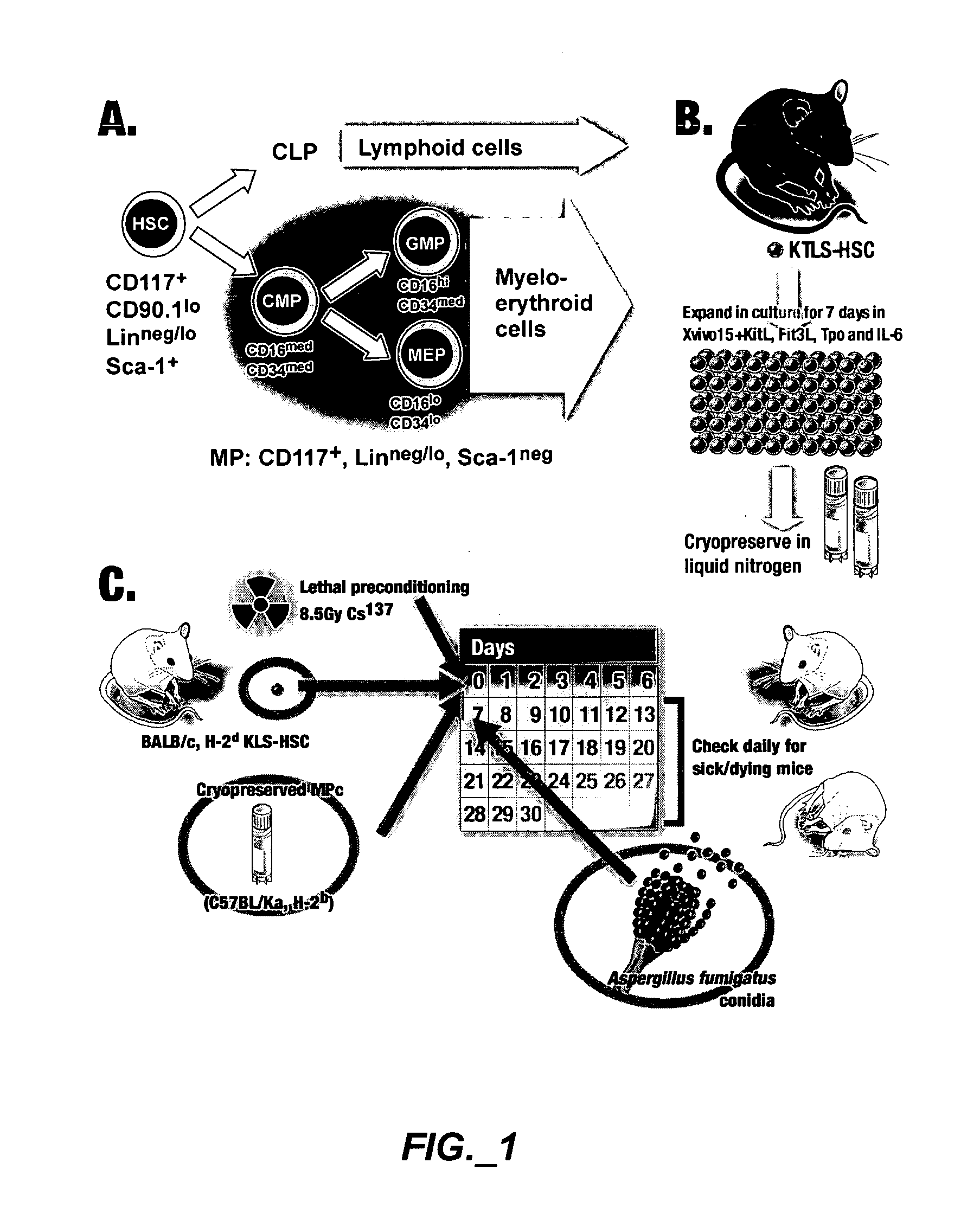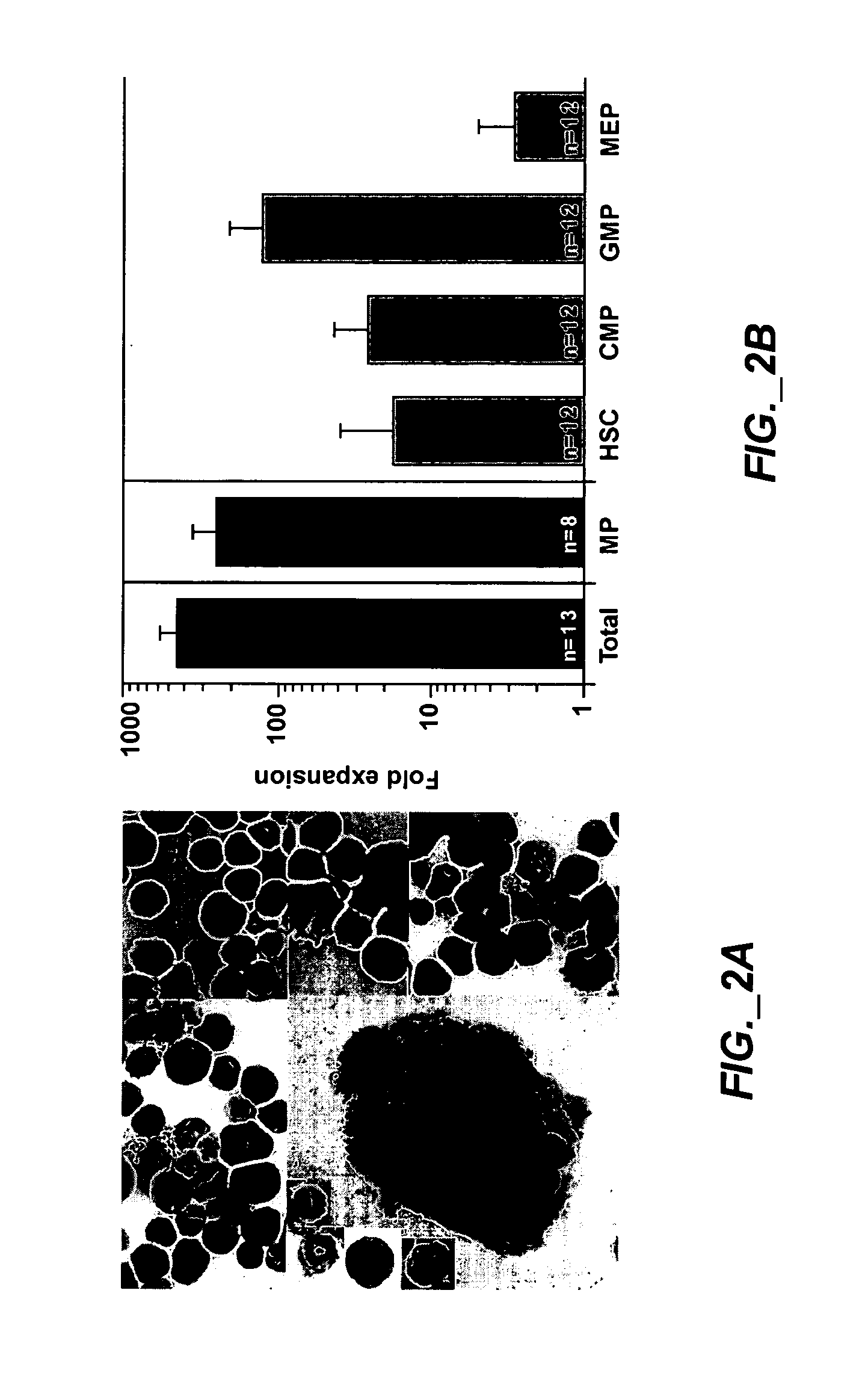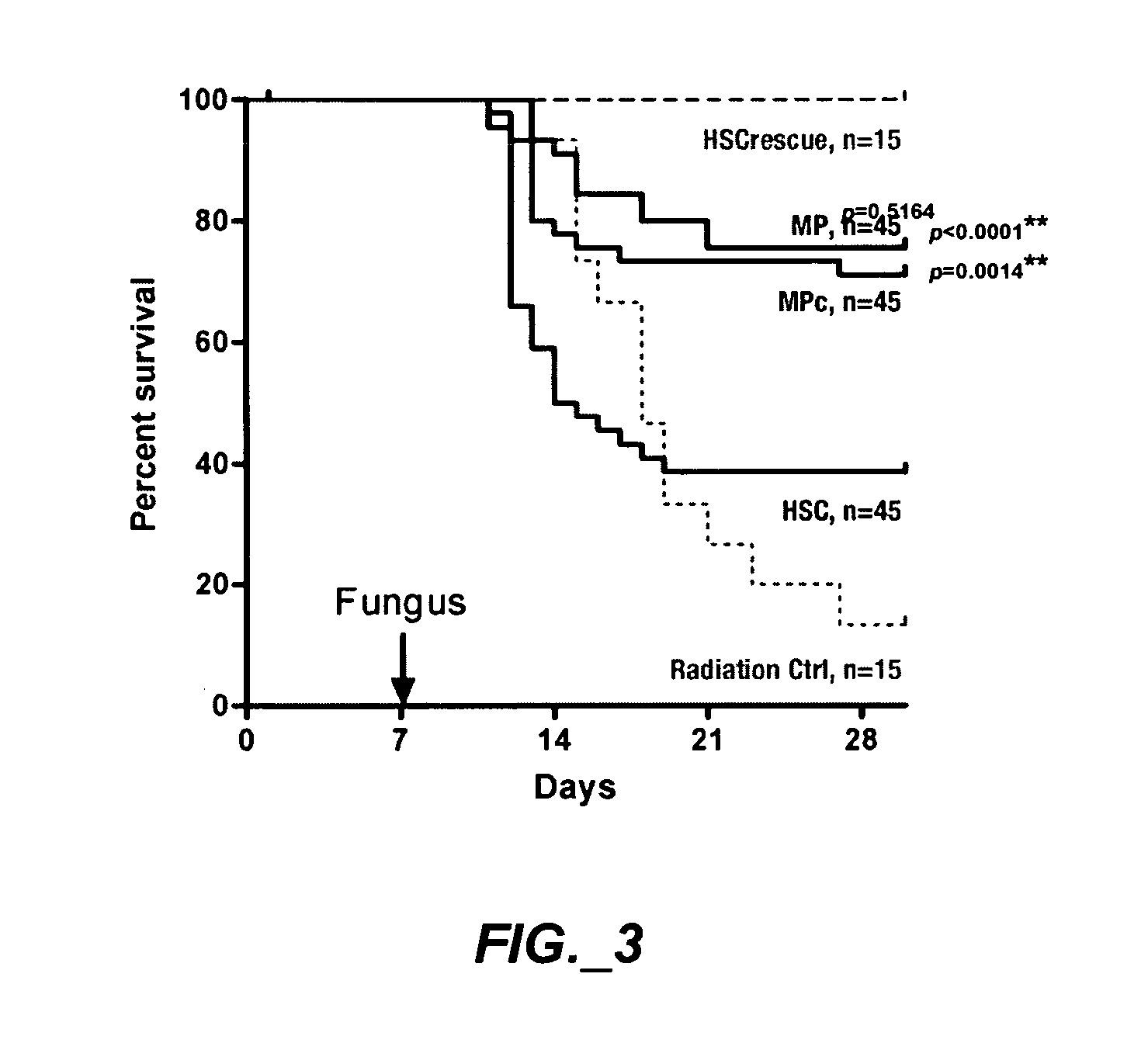Methods of expanding myeloid cell populations and uses thereof
- Summary
- Abstract
- Description
- Claims
- Application Information
AI Technical Summary
Benefits of technology
Problems solved by technology
Method used
Image
Examples
example 1
7.1 Example 1
[0189] Preparation of HSC cells from mice. For obtaining mouse bone marrow cells, animals are euthanized and the femur / tibia removed and cleaned of muscle. The bones are crushed into a pulp using a pestle and mortar, the marrow filtered through a nylon screen, and then centrifuged at 1200 RPM for 5 minutes. Cells are resuspended in 1 ml ACK solution (0.3M NH4Cl, 0.2M KHCO3, MiliO filtered water) for 3-4 minutes on ice, and then washed by filling the tube with staining media (HANKs buffered saline containing 2% FCS and 2 mM EDTA, w / o calcium, w / o magnesium, w / o phenol red). Cells are centrifuged, filtered, and resuspended in staining media, and mouse IgG (1:50 dilution of a 1 mg / ml stock, Sigma, St Louis Mo.) are added. Cells are incubated on ice for 10-15 minutes and then mixed with CD117 microbeads (Miltenyi Biotech, Auburn Calif.) at a volume of 10 μl / mouse in a final volume of 100 μl / mouse staining media. Cells are incubated on ice for 25 minutes...
example 2
7.2 Example 2
Ex Vivo Expanded Cryopreserved Allogenic Myeloid Progenitors Protect Against Lethal Fungus in Neutropenic Mice
[0205] This study examined whether HSC can be expanded into large numbers of functional myeloid progenitors ex vivo; whether ex vivo expanded myeloid progenitors protect allogeneic neutropenic mice from lethal fungus comparable to the protection provided by myeloid progenitors sorted from BM; and shows myeloid progenitors can be cryopreserved without loss of activity.
[0206]FIG. 1 is an exemplary experimental design. FIG. 1A shows cell populations sorted and analyzed, different marker combinations can distinguish HSC and progenitors. CD117+, CD90.1lo, Linneg / lo and Sca-1+ can be used to identify HSC. CD117+, Linneg / lo and Sca-1neg can be used to identify a mixed population of myeloid progenitors. The individual subpopulations (CMP, GMP and MEP) can be distinguished by their CD16 / CD34 profile. FIG. 1B shows derivation of myeloid progenitors from HSC in culture. ...
example 3
7.3 Example 3
Myeloid Progenitors Initiated From Human Hematopoietic Stem Cells in Flasks and Bags.
[0264] Human hpHSC (CD34+CD90+ cells derived from Mobilized Peripheral Blood (MPB) were obtained from healthy volunteers. MPB is enriched for CD34+ cells using a Baxter Isolex device. CD34-enriched cells are further stained and sorted using a modified Dakocytomation MoFlo of a regular BD FACSaria to obtain CD34+CD90+ cells (“hpHSC”) Cells are used either fresh or after cryopreservation, either following the Isolex CD34-enrichment or after CD34+CD90+ sorting on the MoFlo. Samples are frozen manual or using a step rate freezer.
[0265] Freezing of human cells. Cells can be frozen in a cryopreservation media that is a serum free or a serum containing mix. For all the research experiments we are using serum containing cyropreservation media. Serum containing mix: (150 ml total). 37.5 ml serum, 90 ml hetastarch, 22.5 ml DMSO. Pellet cells and resuspend cells in serum free media (IMDM or Xviv...
PUM
 Login to View More
Login to View More Abstract
Description
Claims
Application Information
 Login to View More
Login to View More - R&D
- Intellectual Property
- Life Sciences
- Materials
- Tech Scout
- Unparalleled Data Quality
- Higher Quality Content
- 60% Fewer Hallucinations
Browse by: Latest US Patents, China's latest patents, Technical Efficacy Thesaurus, Application Domain, Technology Topic, Popular Technical Reports.
© 2025 PatSnap. All rights reserved.Legal|Privacy policy|Modern Slavery Act Transparency Statement|Sitemap|About US| Contact US: help@patsnap.com



